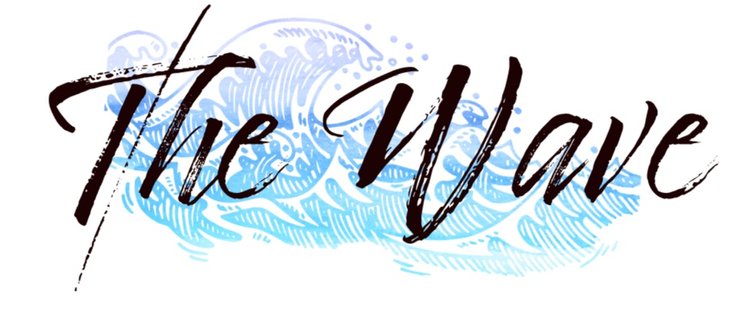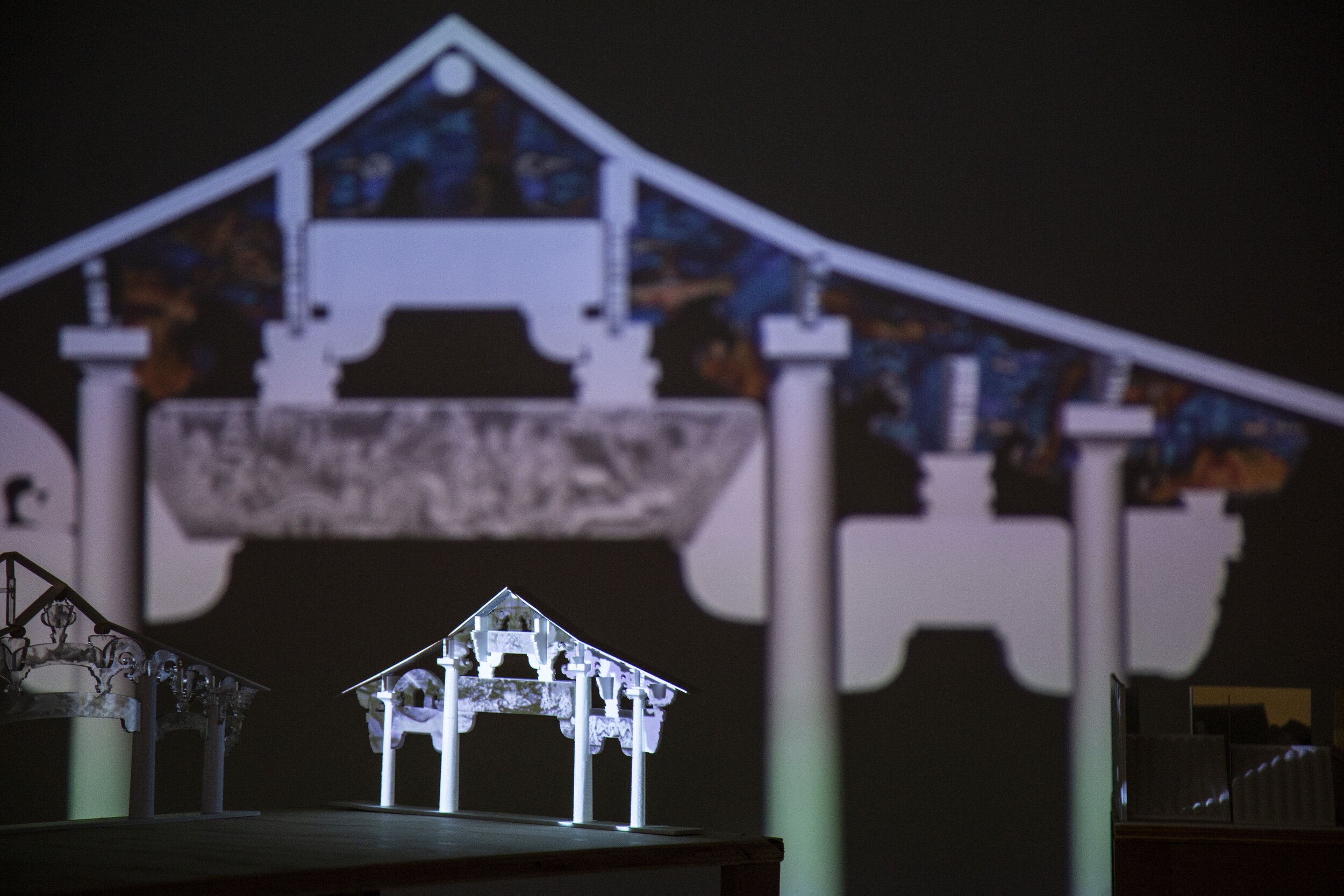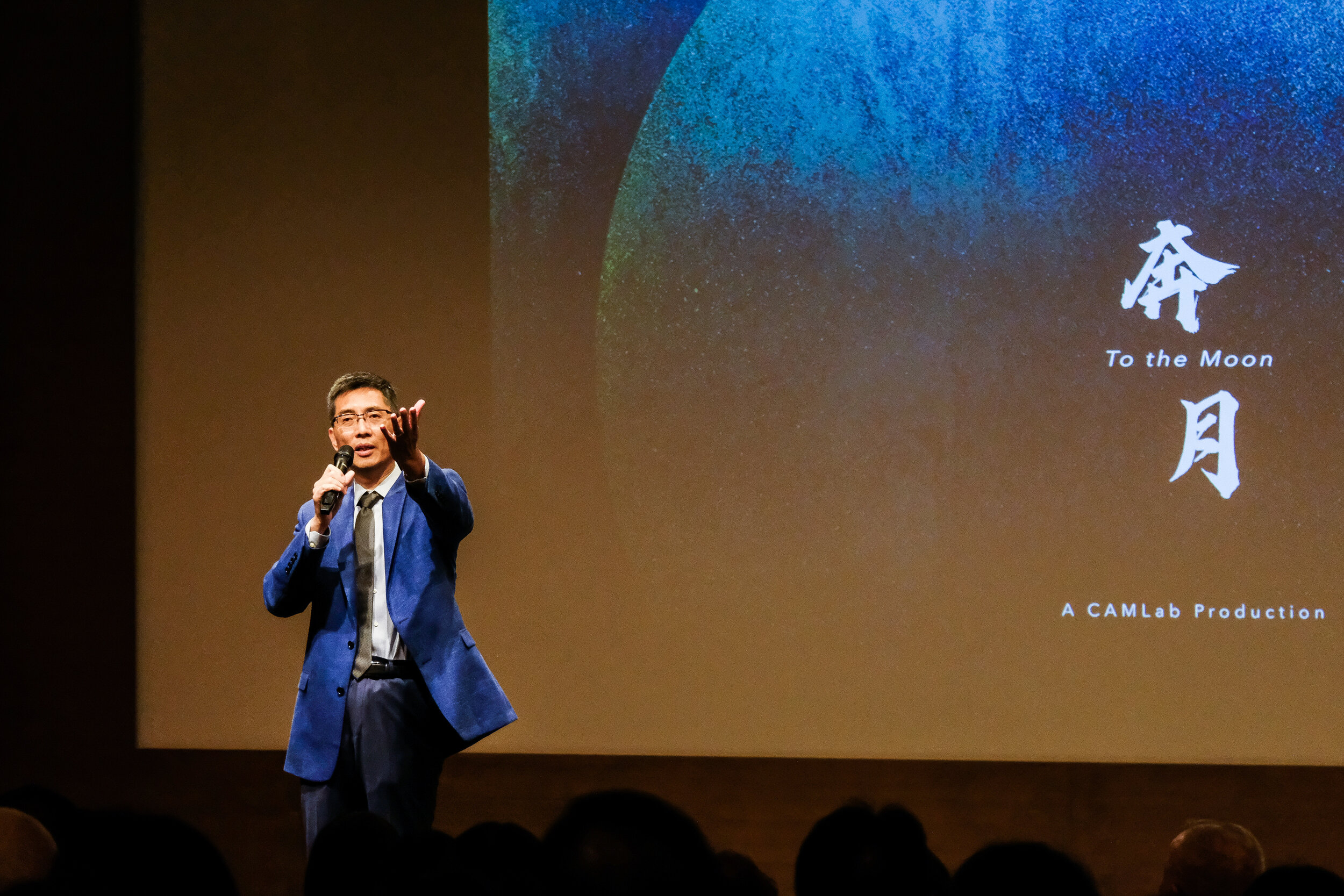I was strangely nervous about this: my first interview, and my first interview through Zoom nonetheless. But the beaming smile Professor Wang wore and the way he immediately started spinning stories out of thin air put me both at ease and in awe, and we were soon ready to dive into the subject of our interview: his CAMLabs.
The CAMLabs are the Chinese Art Media labs, founded by Professor Eugene Wang. They are meant to explore innovative ways of showcasing primarily Asian art and culture through multimedia, immersive installations, currently hosted on their website. When I stumbled across the site a year ago, I was struck by its beauty: I explored the timeless Peony Pavilion; I dove into a Study of Laughs; I watched the metamorphosis of artist Zhao Meng’s Fire Dream. Embedded throughout the blossoming images and interactive exhibits was this sense of discovery: an inexplicable emotion and exploration of who we are and who we can be.
In addition to his work on the CAMLabs, Professor Wang is the Abby Aldrich Rockefeller Professor of Asian Art, teaches many popular courses at Harvard, and has written several award-winning papers and novels. After seeing his work, I instantly marked him down as someone I had to talk to at least once in my life--and he did not disappoint.
The link to the CAMLab site can be found here.
THE LABS
“Yes, storytelling, but a kind of deeper storytelling, the kind that the manifest story often hides.”
Can you speak to your creation of the Chinese Art Media labs? What inspired you to start them?
I launched the lab in 2018 to explore this question I was researching: how images add up in a spatial setting. In caves, tombs, architectural spaces, and so on, images can add up to form a kind of latent logic as opposed to the manifest image you see, and I was very interested in uncovering that.
I was working on these buddhist caves in China. Thousands of Buddhist caves--among them, 492 were covered in paintings. Some of these paintings offer this imaginative process where one enters into a certain kind of meditation as depicted on the wall. Imagining giving up your body to feed the hungry tigress, feeling your body in some kind of levitation, finding yourself in a bodiless state...these are spectacular scenes. And I don’t think any kind of linear writing could do justice to this. It is also difficult for readers to navigate this kind of space through writing, to keep all the compositions on the walls and slopes of a cave in their spatial relations. So I felt like the only way I could share this was to make it immersive, using media and technology to help me communicate this visionary experience. I wanted to set up a media lab to allow one to appreciate and understand this latent narrative and deeper logic.
Would you say an idea of storytelling is reflected in the CAMLabs?
Storytelling is one of the things we wanted to present. But we’re interested in telling the deep story. Let’s say I tell you four stories, one about a prince feeding a hungry tiger, one about a king who saves a dove from a hawk, one about a Buddhist, one about disciples. These are all stories—if I just tell these stories as they are, they’re interesting. But did you know that in fact, these are the building blocks to assemble a kind of mental architecture, an enlightenment narrative that is not so immediately accessible to the audience. Those of us who’ve been deeply trained can get to that level of narrative. That’s the sort of thing we’re more invested in uncovering. So yes, storytelling, but a kind of deeper storytelling, the kind that the manifest story often hides.
That being said, the governing concept I’d propose is more about transformative processes. Why do stories matter? Because things change in stories. We’re interested in that deep-level transformative process where things morph into something else, a new state of being. We hope that you as the audience are also changed by our stories. In the end, we’re ultimately after that process.
Is the lab now different from what you expected it to be?
“Our new vision became “The New AI”: an artful intelligence.”
Anything that you set in motion tends to go towards places you don’t expect. From beginning to now, our new vision slowly became “The New AI”: an artful intelligence. In part, it is meant to meet a challenge that the arts face, which is that increasingly, what we do seems to matter less to society at large. There’s a perceived disconnect between our research and society in general. What the lab wants to do is find a way for our humanistic research to connect with the larger public.
Do you have an example of this?
One of our main projects now is this medium called immersive theater or object play. We used this 16th century Chinese play called the Peony Pavilion as the framework, and we’re now designing a whole series of installations as projections to guide the visitor through the play. This play, by Tang Xianzu, is a fantastic story about two lovers between worlds, and it really epitomizes the frustration of someone with thwarted ambition, this sense of illusion and reality, dreams and aspirations, and how one connects through different universes. Today, we live in a world where at times, we also don't know what’s real and what’s not. We can experience this parallel universe in a 16th century Chinese play and realize its relevance to us.
A huge amount of research and planning is needed for us to deliver this. In pre-modern times, people’s imaginations were easily able to roam between heaven and earth, but they didn’t have the technology to really materialize this. But now we’re in a state where we do have the technology; the irony is that the abundance of technology sometimes leads to impoverished imagination. If we are able to successfully stage the Peony Pavilion, we hope that people have a better way of grasping the breadth and rich experience of the imaginative universe.
It should be fun! The design is still going on, but logistically we’ve already mapped out our plan and are talking to potential sponsors. Eventually, we hope to take this to various cities around the world.
Do you think you can call what you do a kind of intersection between arts and sciences?
Yes, I think so, especially with regard to cognitive studies. We showcase humanistic and artistic inquiry using innovation and technology--that’s the kind of convergence point of our work. CAM can also stand for the Cognitive Aesthetic Media lab, as we have more universal aspirations, not just in Chinese art. It’s a crossover between arts and sciences, particularly in the drive to study how the mind works and our interest in the mindscape.
What’s another area you would like to explore with the CAMLabs?
I want to bring people with different backgrounds and interests and have us all create together. TeamLab in Japan often has people from different backgrounds and disciplines as a part of their team, and that’s one of the things I would like to foster in terms of the atmosphere and community. Over the past two summers we’ve had internship programs where we’ve attracted students from all over the world to participate in different projects. We’re currently renovating a space in the lower level of the Sackler building where we can set up our permanent home, and hopefully sometime in the next year we can have a place for people to come and participate in our projects. A creative ethos is something we certainly started with, but would also like to foster and nourish further. Down the road, I hope CAMLab becomes a place people just want to check out all the time, even the tourists.
AS A PROFESSOR AND LEADER IN THE ARTS
“In our best moments, we should be rising to higher aspirations and greater unity.”
How did you first get involved in the arts?
What always made me interested in the arts was wondering how images work, even in poetry, even in fiction. How do images pack so much into them? In both Eastern and Western literature there’s this same analogy about good poetry: it’s like someone pouring water down your spine, giving you a kind of metaphysical shiver. From poetic images I moved to artistic images: I just always wanted to know how images speak to your heart.
In our culture, it’s pretty uncommon, I’d say, to decide to pursue the arts as opposed to more conventional STEM fields. What would your advice be?
My suggestion is that nowadays, you should pursue two divergent fields. That way you can integrate your different disciplinary skill sets. These boundaries between fields have become pretty porous: the gap between science and art is smaller than you think. Divergent fields can converge in interesting ways, and we see that everyday in the work that we do.
Many of our Wave readers are Asian American, finding themselves amidst not only divergent career paths and interests, but also the conflict between East and West. How do you see the juxtaposition between Eastern and Western art?
“My research tries to uncover things that speak to this higher aesthetic ideal so that it’s not just about China, not just about America, but a higher plane of human aspiration.”
When America was first finding itself rising in the world stage, they positioned themselves as belonging neither to European nor Asian art. America gave itself the responsibility of integrating the two into one new age of aesthetic beauty. You have someone like Charles Freer who created a gallery in the Smithsonian that specialized in Chinese, Japanese, and American art. When he visited China, he saw this colosseum 17th century Buddah in Longmen. This Buddah, patroned by Empress Wu Zetian, had an extraordinary feminine physique, even though Buddahs are typically male. Freer said he had never seen anything this beautiful. Why was he so taken by this image? What did he see in this Buddah? Well, you can see that the kind of American paintings he collected were all about feminine beauty, and so he really connected to this kind of richness, an interior beauty and spirituality in Eastern art. There was a crushing sense of a changing world where the East and West could be united into one continuum.
From opposite sides of the world, we often find a similar line of thinking. Americans in their best moments tend to look both ways, a sort of unifier of different cultural resources. In our best moments, we should be rising to higher aspirations and greater unity. Moving forward, my research tries to uncover things that speak to this higher aesthetic ideal so that it’s not just about China, not just about America, but a greater plane of human aspiration.
One of your most well known classes is China in 12 Artworks. Can you tell us more about this class?
This class, I think, speaks to a special student mindset. When it comes to Asian studies, it’s so huge and daunting to many students. This was kind of a solution to that, saying, in this class, we’re only dealing with 12 objects. But it doesn’t dumb down the subject at all. It’s a way to get to enormous horizons through only a few objects. Each object has a microcosm that relates to a sort of macrocosm. The idea is centered around the question of how to look at an object and find the whole world through it. Normally we’d use objects from Harvard museums, but this year we’d use digital mediums. I’m offering it in the spring semester, so come take it!
What are some of the other courses you’ve taught?
There’s a new course I just developed and taught this semester, called Chinese Sonic Painting. It’s a strange concept because paintings aren’t supposed to have soundtracks. So why did I name it this? At the surface level, many paintings involve cicadas, parrots, objects that make noise. On the deeper level, the paintings that I’m teaching are used to get students to appreciate a different kind of painting, one that prompts a kind of inner speech. The painting might depict this insect, or ox, or boy playing a flute, but these are all cues to get the viewer to activate a certain inner monologue. It may be alien to some students, but that’s the whole point. I hope to help students realize there is another way of figuring out a painting, one that’s much more personal, much more subjectively engaged, having less to do with the eye and more to do with the mind. We had a lot of fun this semester, and I hope to continue teaching this course.
What’s your favorite project you’ve ever worked on?
I recently wrote and directed a film called “To The Moon.” It’s about an artist born in wartime China. His imagination that takes him to the moon coincides with the Apollo moon landing, and there’s this sense of being alone but also finding yourself. Working with my team, which is made up of a lot of talented young students, I have to say that whenever things really came together, when you see the camera move across the rooftops and hear the music, you just feel like you’re kind of flying above the rooftops, and your heartbeat goes with that flow. It really was the most moving moment. Seeing your work turn into this moment of flying and watching everything come together--it was absolutely enchanting and gratifying. If you see the film, you should look for that sequence!
I think all that you’ve done truly holds great importance for the Asian American community. Is there anything you’re really excited for in the future?
I’d be excited if everyone who visited Harvard also came by the CAMLabs. I really hope to see it grow and expand...I’m really excited for that.
“There’s a pressing sense that something needs to be done to make what we do more relevant to the outer world...I hope to develop the CAMLabs in a way such that we can share our stories with everyone one day.”
Professor Wang’s genuine passion for what he does was something that lifted me up for days after our interview. His work transcends boundaries to fuse art and science, East and West, innovation and aesthetic, ordinary people and extraordinary ideas, and it has impacted more of us than he knows. It is an ability to combine what we know and what we don’t know to create something we love, a transformative process for both creator and viewer. For those in the Asian American artistic community, he shows us that anything is possible as long as we have stories to tell. But if there is anything to take away from Professor Wang, it must be his sense of living: to breathe, to think, to listen, to create.







